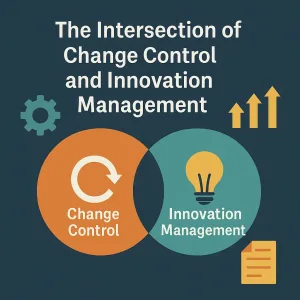Introduction
The integration of sustainability into project management has become not just a trend, but a necessity. As organizations strive to meet the demands of stakeholders and the environment, the concept of sustainability in project management has gained significant traction. Sustainability, in this context, refers to the ability to manage projects in a way that meets present needs without compromising the ability of future generations to meet their own needs. This encompasses environmental stewardship, social responsibility, and economic viability, ensuring that projects contribute positively to society and the planet.
The relevance of strategy and portfolio management in achieving long-term sustainability cannot be overstated. Effective portfolio management aligns projects with the strategic goals of the organization, ensuring that resources are allocated to initiatives that not only deliver financial returns but also enhance social and environmental outcomes. By adopting a strategic approach, organizations can prioritize projects that align with their sustainability objectives, thereby fostering a culture of responsible project execution.
A sustainable portfolio is one that balances economic, social, and environmental considerations, leading to projects that are not only viable but also beneficial in the long run. The benefits of maintaining such a portfolio are manifold:
- Enhanced Reputation: Organizations that prioritize sustainability often enjoy a stronger brand reputation, attracting customers and investors who value corporate responsibility.
- Risk Mitigation: By focusing on sustainable practices, organizations can reduce risks associated with regulatory compliance, environmental impact, and social backlash.
- Long-Term Value Creation: Sustainable portfolios are designed to deliver long-term value, ensuring that projects contribute to the organization’s overall mission while addressing global challenges such as climate change and social inequality.
Understanding Sustainable Portfolio Management
Sustainable portfolio management is an essential approach in project management that integrates sustainability principles into the selection, prioritization, and management of projects within an organization. This method not only aims to achieve immediate project goals but also focuses on long-term value creation that aligns with broader sustainability objectives. Here are the key aspects of sustainable portfolio management:
Definition and Objectives
- Definition: Sustainable portfolio management refers to the systematic process of managing a collection of projects in a way that considers their environmental, social, and economic impacts. It seeks to ensure that the projects undertaken contribute positively to the organization’s sustainability goals while delivering value to stakeholders.
- Objectives: The primary objectives of sustainable portfolio management include:
- Maximizing Value: Ensuring that projects deliver not just financial returns but also social and environmental benefits.
- Risk Management: Identifying and mitigating risks associated with sustainability, such as regulatory changes or shifts in public perception.
- Long-term Viability: Fostering a portfolio that supports the organization’s long-term sustainability vision and mission.
Role of Sustainability in Aligning Projects with Organizational Strategy
Sustainability plays a crucial role in aligning projects with the overall organizational strategy. By integrating sustainability into project selection and management, organizations can ensure that their initiatives support their strategic goals. This alignment can be achieved through:
- Strategic Frameworks: Developing frameworks that incorporate sustainability criteria into project evaluation processes. This ensures that projects not only meet immediate business needs but also contribute to long-term sustainability objectives.
- Stakeholder Engagement: Involving stakeholders in the decision-making process to understand their sustainability concerns and expectations. This engagement helps in selecting projects that resonate with the values of both the organization and its stakeholders.
- Performance Metrics: Establishing metrics that measure the sustainability impact of projects. This allows organizations to track progress and make informed decisions about future investments.
Balancing Economic, Social, and Environmental Factors
A fundamental aspect of sustainable portfolio management is the balance between economic, social, and environmental factors in decision-making. This balance is critical for ensuring that projects are not only profitable but also socially responsible and environmentally sound. Key considerations include:
- Economic Factors: Evaluating the financial viability of projects while considering their long-term economic impact. This includes assessing cost savings from sustainable practices and potential revenue from new markets focused on sustainability.
- Social Factors: Understanding the social implications of projects, such as their impact on local communities and employee well-being. Projects should aim to enhance social equity and community engagement.
- Environmental Factors: Assessing the environmental footprint of projects and striving to minimize negative impacts. This includes considering resource use, waste management, and carbon emissions in project planning and execution.
Key Components of a Sustainable Portfolio
Building a sustainable portfolio in project management is essential for ensuring long-term success and alignment with organizational goals, particularly in the context of sustainability. Here are the key components that contribute to a sustainable portfolio:
1. Importance of Stakeholder Engagement
Engaging stakeholders is crucial for the success of any project portfolio, especially when sustainability is a priority. Stakeholders, including employees, customers, suppliers, and community members, provide valuable insights and perspectives that can shape project outcomes. Effective engagement helps to:
- Identify Needs and Expectations: Understanding stakeholder priorities allows project managers to align projects with community and environmental needs, fostering a sense of ownership and support.
- Enhance Collaboration: Involving stakeholders in decision-making processes encourages collaboration, leading to innovative solutions that address sustainability challenges.
- Build Trust and Transparency: Open communication with stakeholders builds trust, which is essential for long-term relationships and successful project implementation.
2. Role of Risk Assessment in Sustainability
Risk assessment is a fundamental component of project portfolio management, particularly in the context of sustainability. It involves identifying, analyzing, and mitigating risks that could impact project success. Key aspects include:
- Identifying Environmental Risks: Understanding potential environmental impacts helps in making informed decisions that minimize negative effects on ecosystems and communities.
- Evaluating Social Risks: Assessing social implications ensures that projects do not adversely affect local populations, thereby promoting social equity and responsibility.
- Incorporating Adaptive Strategies: A robust risk assessment process allows organizations to develop adaptive strategies that can respond to changing conditions, ensuring resilience in the face of uncertainty.
3. Significance of Resource Allocation and Optimization
Effective resource allocation is vital for achieving sustainability goals within a project portfolio. This involves:
- Prioritizing Sustainable Projects: Allocating resources to projects that align with sustainability objectives ensures that the portfolio contributes positively to environmental and social outcomes.
- Optimizing Resource Use: Efficient use of resources—such as time, budget, and personnel—reduces waste and enhances project efficiency, which is essential for sustainable practices.
- Balancing Short-term and Long-term Goals: A sustainable portfolio must balance immediate project needs with long-term sustainability objectives, ensuring that resources are used wisely over time.
4. Need for Continuous Monitoring and Evaluation
Continuous monitoring and evaluation are critical for maintaining the sustainability of a project portfolio. This process involves:
- Tracking Performance Metrics: Regularly assessing key performance indicators (KPIs) related to sustainability helps organizations understand the impact of their projects and make necessary adjustments.
- Learning from Outcomes: Evaluating project outcomes provides insights into what works and what doesn’t, facilitating continuous improvement and innovation in sustainability practices.
- Adapting to Change: Ongoing evaluation allows organizations to adapt their strategies in response to new challenges and opportunities, ensuring that the portfolio remains relevant and effective in achieving sustainability goals.
Best Practices for Building a Sustainable Portfolio
For Sustainability Officers and Project Managers, building a sustainable portfolio is essential for long-term success. This section outlines actionable strategies that can help organizations align their project portfolios with sustainability goals, ensuring that they not only meet current needs but also contribute positively to future generations.
1. Establish Clear Sustainability Goals Aligned with Organizational Vision
- Define Sustainability Objectives: Begin by articulating specific sustainability goals that resonate with the overall vision of the organization. This could include reducing carbon footprints, enhancing resource efficiency, or promoting social equity.
- Integrate Goals into Project Selection: Ensure that these sustainability objectives are embedded in the project selection criteria. This alignment helps in prioritizing projects that contribute to the broader mission of sustainability, making it easier to justify investments in these initiatives.
2. Implement a Robust Project Selection Process
- Prioritize Sustainable Initiatives: Develop a project selection framework that emphasizes sustainability. This could involve scoring potential projects based on their environmental impact, social benefits, and economic viability.
- Use a Balanced Scorecard Approach: Incorporate a balanced scorecard that evaluates projects not just on financial returns but also on their sustainability metrics. This holistic view can help in making informed decisions that favor long-term sustainability over short-term gains.
3. Encourage Cross-Functional Collaboration and Knowledge Sharing
- Foster Interdepartmental Communication: Create platforms for collaboration among different departments, such as operations, finance, and sustainability teams. This can lead to innovative solutions that enhance project outcomes and sustainability.
- Share Best Practices and Lessons Learned: Establish a culture of knowledge sharing where teams can discuss successes and challenges related to sustainability initiatives. This can be facilitated through regular workshops, meetings, or digital collaboration tools.
4. Utilize Technology and Tools for Data Analysis and Reporting
- Leverage Data Analytics: Implement advanced data analytics tools to assess the sustainability performance of projects. This can help in identifying trends, measuring impacts, and making data-driven decisions.
- Automate Reporting Processes: Use technology to streamline reporting on sustainability metrics. Automated reporting tools can save time and ensure that stakeholders have access to up-to-date information, facilitating transparency and accountability.
By adopting these best practices, Project Managers and Sustainability Officers can effectively build a sustainable portfolio that not only meets organizational goals but also contributes to a more sustainable future. This strategic approach ensures that projects are not only viable in the short term but also resilient and beneficial in the long run.
Measuring Success in Sustainable Portfolio Management
Evaluating the effectiveness of sustainability initiatives is crucial for long-term success. This section outlines best practices for measuring success in sustainable portfolio management, emphasizing key performance indicators (KPIs), stakeholder engagement, and relevant case studies.
Key Performance Indicators (KPIs) for Measuring Sustainability Impacts
To effectively measure the sustainability impacts of projects within a portfolio, it is essential to establish clear and relevant KPIs. These indicators should align with the overall sustainability goals of the organization and can include:
- Environmental Impact Metrics: These may involve measuring reductions in carbon emissions, energy consumption, waste generation, and water usage. For instance, tracking the percentage decrease in greenhouse gas emissions from projects can provide a tangible measure of environmental performance.
- Social Impact Metrics: Assessing the social benefits of projects, such as community engagement, job creation, and improvements in quality of life, is vital. KPIs could include the number of community members engaged in project activities or the percentage of local hires in project teams.
- Economic Viability Metrics: Evaluating the financial sustainability of projects is also important. This can include measuring return on investment (ROI), cost savings from sustainable practices, and the long-term financial benefits of sustainability initiatives.
By utilizing a balanced set of KPIs, organizations can gain a comprehensive view of their sustainability performance and make informed decisions about future projects.
Importance of Stakeholder Feedback and Engagement
Engaging stakeholders is a critical component of evaluating sustainability initiatives. Stakeholder feedback provides valuable insights into the effectiveness of projects and helps identify areas for improvement. Key aspects include:
- Involvement of Diverse Stakeholders: Engaging a wide range of stakeholders—including employees, community members, investors, and regulatory bodies—ensures that multiple perspectives are considered. This can lead to more robust evaluations and foster a sense of ownership among stakeholders.
- Regular Feedback Mechanisms: Establishing regular channels for feedback, such as surveys, focus groups, and public forums, allows stakeholders to voice their opinions and experiences related to sustainability initiatives. This feedback can be instrumental in refining project strategies and enhancing overall effectiveness.
- Transparent Reporting: Sharing evaluation results with stakeholders promotes transparency and accountability. It also encourages ongoing dialogue about sustainability goals and progress, which can strengthen stakeholder relationships and support for future initiatives.
Challenges and Solutions in Sustainable Portfolio Management
Particularly with a focus on sustainability, organizations often encounter several challenges that can hinder their progress toward long-term success. Addressing these obstacles is crucial for Sustainability Officers and Project Managers aiming to build a sustainable portfolio. Below are some of the major challenges along with effective solutions to overcome them.
Major Challenges
- Resistance to Change: One of the most significant barriers to implementing sustainable practices in project management is the inherent resistance to change within organizations. Employees and stakeholders may be accustomed to traditional methods and may view new sustainability initiatives as disruptive or unnecessary.
- Limited Resources: Many organizations face constraints in terms of budget, personnel, and time when attempting to integrate sustainability into their project portfolios. This limitation can lead to a lack of comprehensive planning and execution of sustainable practices.
- Lack of Awareness and Understanding: There is often a gap in knowledge regarding sustainability principles and practices among team members. This lack of awareness can result in ineffective implementation of sustainability initiatives and missed opportunities for improvement.
- Inadequate Leadership Support: Without strong support from leadership, sustainability initiatives may struggle to gain traction. Leaders play a critical role in championing sustainability efforts and allocating necessary resources.
Solutions
- Training Programs: Implementing comprehensive training programs can help address resistance to change and enhance understanding of sustainability principles. These programs should be designed to educate team members about the benefits of sustainable practices and how they can be integrated into existing workflows. By fostering a culture of learning, organizations can reduce apprehension and encourage proactive participation in sustainability initiatives.
- Stakeholder Engagement Strategies: Engaging stakeholders early in the process is essential for overcoming resistance and ensuring buy-in for sustainability initiatives. This can be achieved through regular communication, workshops, and collaborative decision-making processes. By involving stakeholders in the planning and implementation phases, organizations can create a sense of ownership and commitment to sustainability goals.
- Resource Allocation and Prioritization: To combat limited resources, organizations should prioritize sustainability initiatives that align with their strategic goals. This may involve reallocating existing resources or seeking external funding and partnerships. By focusing on high-impact projects, organizations can maximize their sustainability efforts without overextending their capabilities.
- Leadership Support and Advocacy: Strong leadership support is vital for the success of sustainable portfolio management. Leaders should actively advocate for sustainability initiatives, demonstrating their commitment through actions and resource allocation. By setting clear sustainability goals and expectations, leaders can inspire their teams to embrace change and work collaboratively toward achieving these objectives.
Future Trends in Sustainable Portfolio Management
Sustainability has emerged as a critical focus area for organizations aiming to achieve long-term success. This section explores the future trends in sustainable portfolio management, emphasizing the importance of digital transformation, regulatory compliance, and innovation.
1. Digital Transformation and Data Analytics
- Integration of Technology: The rise of digital transformation is reshaping how project managers approach portfolio management. Technologies such as artificial intelligence (AI), machine learning, and the Internet of Things (IoT) are being integrated into project management practices to enhance decision-making and efficiency. These tools enable project managers to analyze vast amounts of data, leading to more informed choices regarding resource allocation and project prioritization.
- Data-Driven Decision Making: Data analytics plays a pivotal role in sustainable portfolio management. By leveraging data, organizations can assess the environmental and social impacts of their projects, allowing for better alignment with sustainability goals. This analytical approach helps in identifying projects that not only deliver financial returns but also contribute positively to society and the environment.
2. Regulatory Compliance and Corporate Social Responsibility (CSR)
- Increasing Regulatory Demands: As governments and regulatory bodies worldwide implement stricter sustainability regulations, organizations must adapt their project portfolios to comply with these requirements. This trend emphasizes the need for project managers to stay informed about relevant regulations and ensure that their projects align with legal standards.
- Corporate Social Responsibility (CSR): The growing emphasis on CSR is influencing project portfolio management strategies. Companies are increasingly held accountable for their social and environmental impacts, prompting project managers to prioritize initiatives that enhance their organization’s reputation and stakeholder trust. This shift not only helps in compliance but also fosters a culture of sustainability within the organization.
3. Innovation as a Driver for Sustainable Outcomes
- Fostering a Culture of Innovation: Innovation is crucial for achieving sustainable project outcomes. Organizations are encouraged to cultivate a culture that supports creative thinking and experimentation. This can lead to the development of new processes, products, and services that minimize environmental impact while maximizing social benefits.
- Sustainable Solutions: The focus on innovation also extends to finding sustainable solutions that address pressing global challenges, such as climate change and resource scarcity. Project managers are increasingly tasked with identifying and implementing innovative practices that reduce waste, enhance energy efficiency, and promote sustainable resource use throughout the project lifecycle.
Conclusion
The integration of sustainability into project portfolio management is not just a trend but a necessity for long-term success. As organizations strive to meet environmental, social, and governance (ESG) criteria, it becomes increasingly clear that sustainable practices are essential for maintaining competitive advantage and ensuring resilience in the face of future challenges.
Key Takeaways:
- Importance of Sustainability Integration: Incorporating sustainability into portfolio management allows organizations to align their projects with broader corporate social responsibility goals. This alignment not only enhances brand reputation but also attracts investors and customers who prioritize sustainability. By embedding sustainable practices into the project selection and prioritization processes, organizations can ensure that their portfolios contribute positively to the environment and society.
- Adopting Best Practices: Project Managers and Sustainability Officers should actively seek to implement best practices in sustainable portfolio management. This includes conducting thorough sustainability assessments, engaging stakeholders in the decision-making process, and utilizing metrics to measure the impact of projects on sustainability goals. By fostering a culture of sustainability within their teams, they can drive innovation and improve project outcomes.
In conclusion, the journey towards a sustainable portfolio is ongoing and requires commitment and collaboration. By prioritizing sustainability in project portfolio management, organizations can achieve not only their strategic objectives but also contribute to a more sustainable future for all.
Find out more about Shaun Stoltz https://www.shaunstoltz.com/about/.
This post was written by an AI and reviewed/edited by a human.



